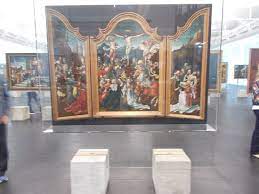Navajo Nation Zoological and Botanical Park
Navajo Nation Zoological and Botanical Park
The Navajo Nation Zoological and Botanical Park is located in Window Rock, Arizona, the Navajo Nation's capital. It is the only tribally owned zoological park in the United States, and it is unique among zoological institutions in that its exhibits are labelled in Navajo Indian. It has been administered by the Navajo National Parks and Recreation Authority since its inception in the early 1960s, and it became part of the Navajo National Department of Fish and Wildlife in September 2006. The zoo also has a fantastic playground for kids. While its facilities have the unique mission of preserving and caring for fauna and flora important to Navajo culture, their existence has also sparked debate.
History
The zoo's first specimen was a bear that was abandoned by a government organisation following the 1963 Navajo Fair, and the animal was named "Yogi Bear" after the popular cartoon character at the time. Since then, about 50 different species, nearly all of which are native to the area, have been on display. The Navajo Tribal Zoo, then known as the Navajo Tribal Zoo, moved into its current location in 1976 and became part of the Navajo Tribal Parks and Recreation System. It was re organised and taken over by the Navajo Department of Fish and Wildlife in September 2006.
Personnel and finances
David Mikesich, a biologist who worked for the Navajo Natural Heritage Program as an Endangered Species Field Zoologist from 1994 to 2010, is the current director and curator of the institution. His predecessor, Matthew Holdgate, was the Department of Fish and Wildlife's first director (from 2007 to 2010). He was in charge of transforming and modernising the Navajo Zoo. The zoo currently has five dedicated animal care staff members. This team is also involved in construction and renovation, as well as behavioural enrichment. The Navajo government primarily funds it, with an annual budget of less than US$500,000, but it also accepts donations. The facility is free to enter.
The Navajo National Museum at Window Rock (Tségháhoodzán) is located on 14.7 acres (5.9 ha) of land adjacent to the zoo. It is home to approximately 100 animals representing more than 50 species and is visited by approximately 45,000 people each year. The zoo describes itself as a "reserve of nature and spirit," and its mission is to conserve "native plants and animals, including rare, vulnerable, and endangered species," with a focus on fauna and flora important to Navajo culture and traditions. The zoo primarily houses injured and orphaned Navajoland animals and runs cultural and educational programmers in collaboration with local schools and other institutions. Furthermore, injured and orphaned animals living in The wild are well cared for here. The zoo also encourages the use of plants and animals for ceremonial purposes in accordance with Navajo traditions, and it hosts meetings for offerings and ceremonies at its facilities on a regular basis.
Program for Animals
For a fee, any animal in the zoo can be "accepted"; the host receives a certificate, and his or her name is engraved on a plaque next to the exhibit in question. If the animal has never been adopted before, the sponsor will be able to name it; in the process, various animals were given names such as "Hunter" for a park mountain lion, "Boomer" for an elk, and "Thor" for one of the golden eagles.






Comments
Post a Comment